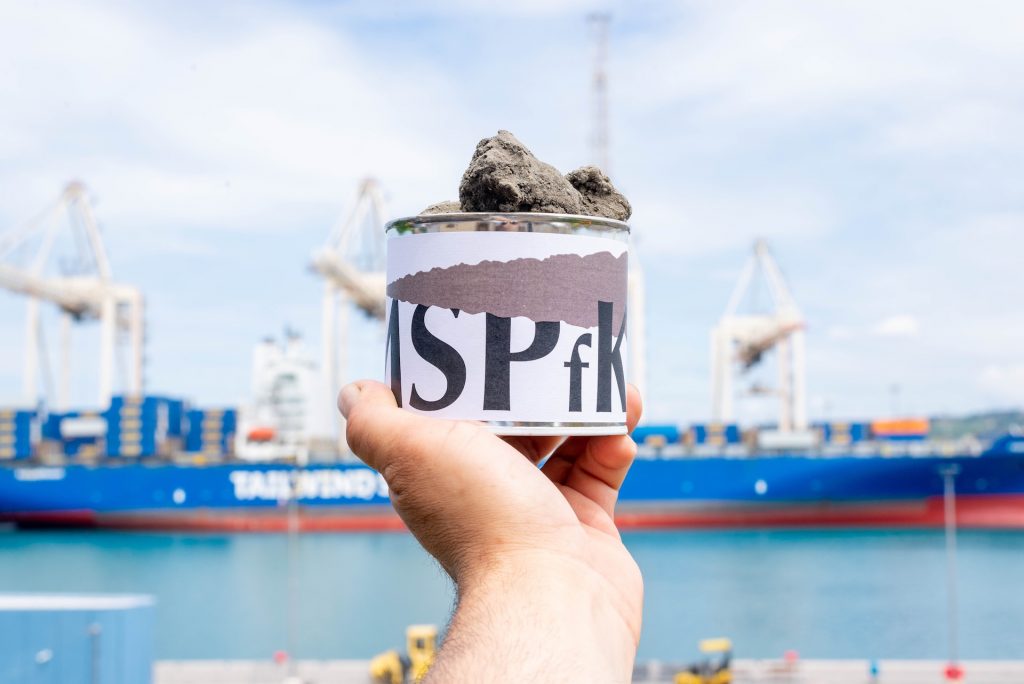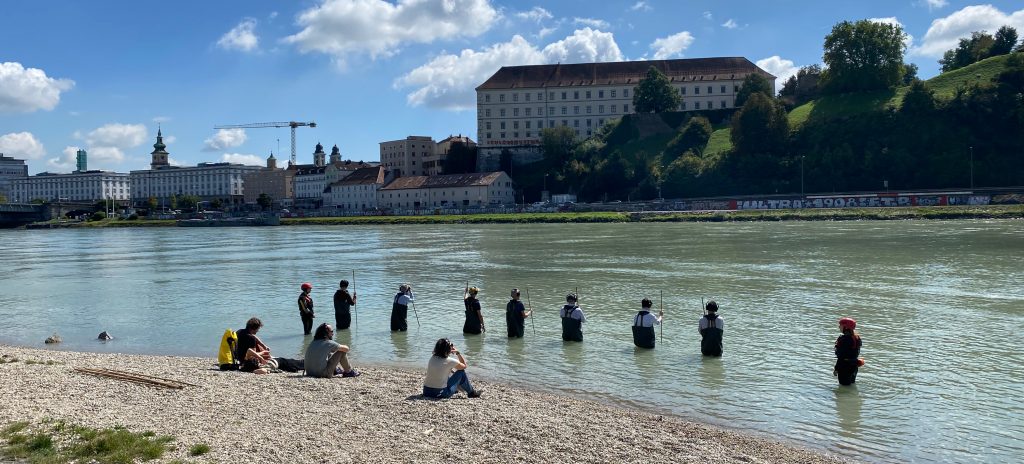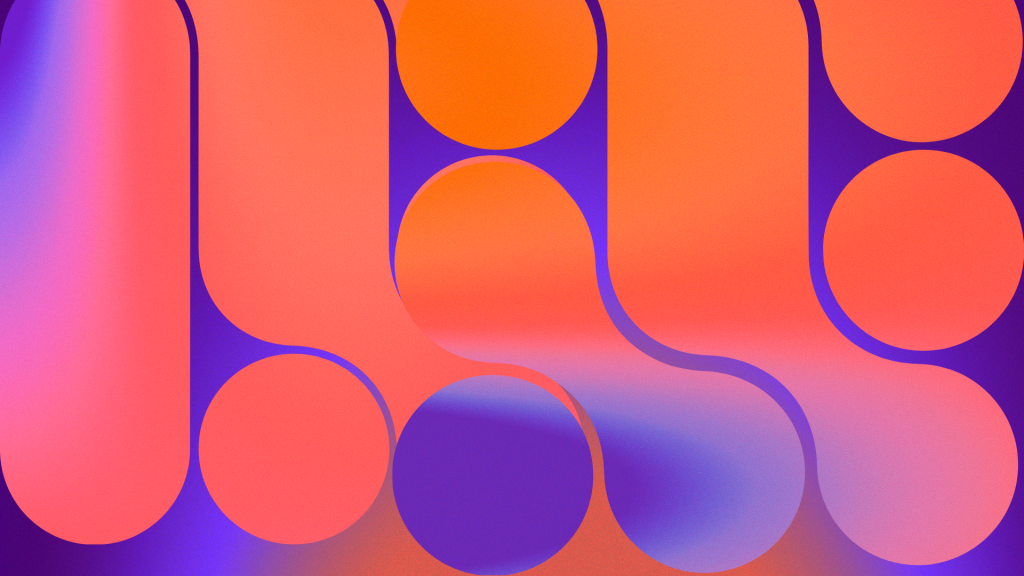Sediment Lab is a research-based artistic project that explores the reuse of marine sediment—an abundant byproduct of port maintenance—as a material for sustainable design. Developed during a residency in collaboration with the Port of Koper and the National Institute of Biology – Marine Biology Station Piran, the project responds to the ecological and logistical challenges posed by sediment accumulation from continuous dredging.
The project focuses on transforming marine sediment into biomaterials, specifically interior-use tiles and natural paints. These materials were developed by combining sediment with locally sourced natural binders, stabilizers, and additives. The outcomes demonstrate how discarded materials can be reimagined through interdisciplinary collaboration and low-impact fabrication processes.
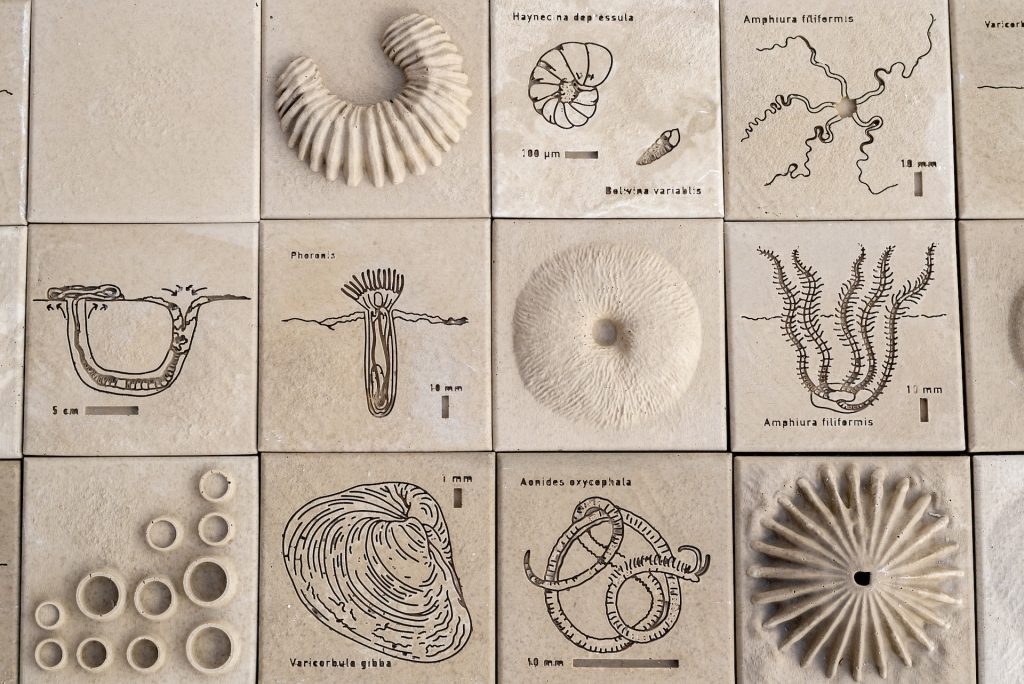
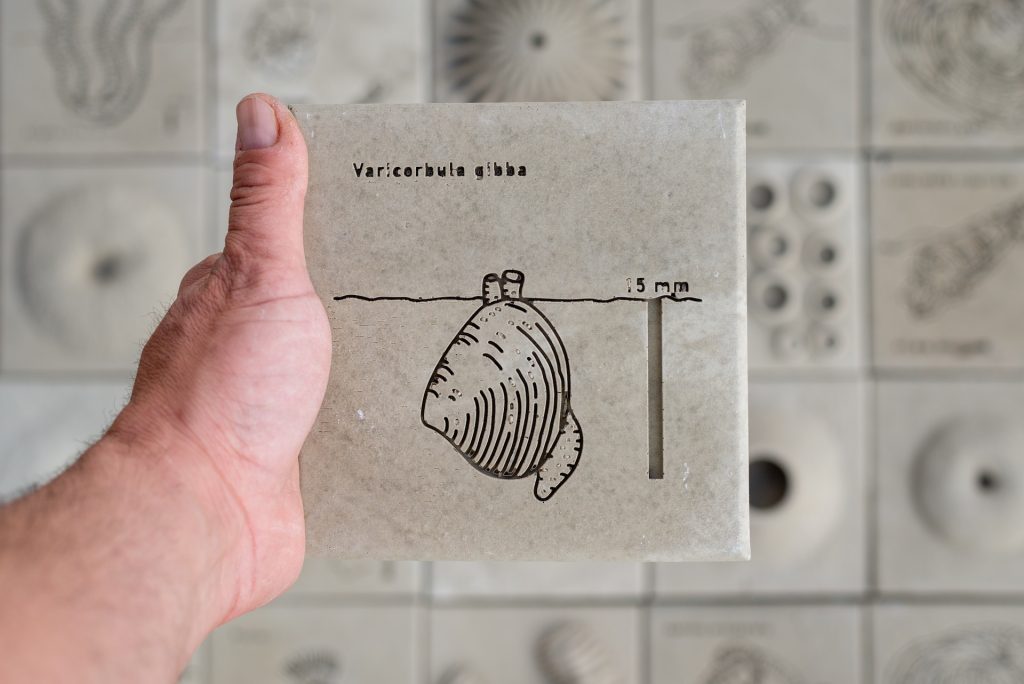
A key component of the project was the investigation of benthic ecosystems—complex communities of organisms living within the sediment. This research informed the design of workshop activities and served as a powerful educational and conceptual tool. Participants were introduced not only to casting and material-making techniques, but also to the hidden structures and lifeforms that shape marine sediment, including polychaete worms, burrowing shrimp, and other invertebrates. These insights offered both ecological context and artistic inspiration.
Hypercomf is a multidisciplinary artist group exploring the intersections of ecology, technology, and culture through speculative design, sustainable materials, and community engagement.
Public workshops were designed to be accessible and engaging, with a focus on hands-on learning and take-home outcomes. Participants learned to work with the sediment-based mixtures and explored sustainable material use while reflecting on the human impact on marine environments.
The project also includes a short video artwork that juxtaposes marine science, industrial activity, and underwater life. It highlights the tension between ecological systems and economic growth, questioning the long-term consequences of continuous expansion along coastal zones.
Sediment Lab proposes new ways to understand and work with marine materials. By connecting artistic practice, environmental research, and public participation, the project opens up conversations around sustainability, resource use, and the unseen infrastructures beneath the surface.
Artist: Hypercomf
Digital object design: Christos Fousekis
Graphic elements design: Christos Kotsinis
Video production: Alexandros Tiniakos
Production assistance: Harut Marangozyan
Residency support network
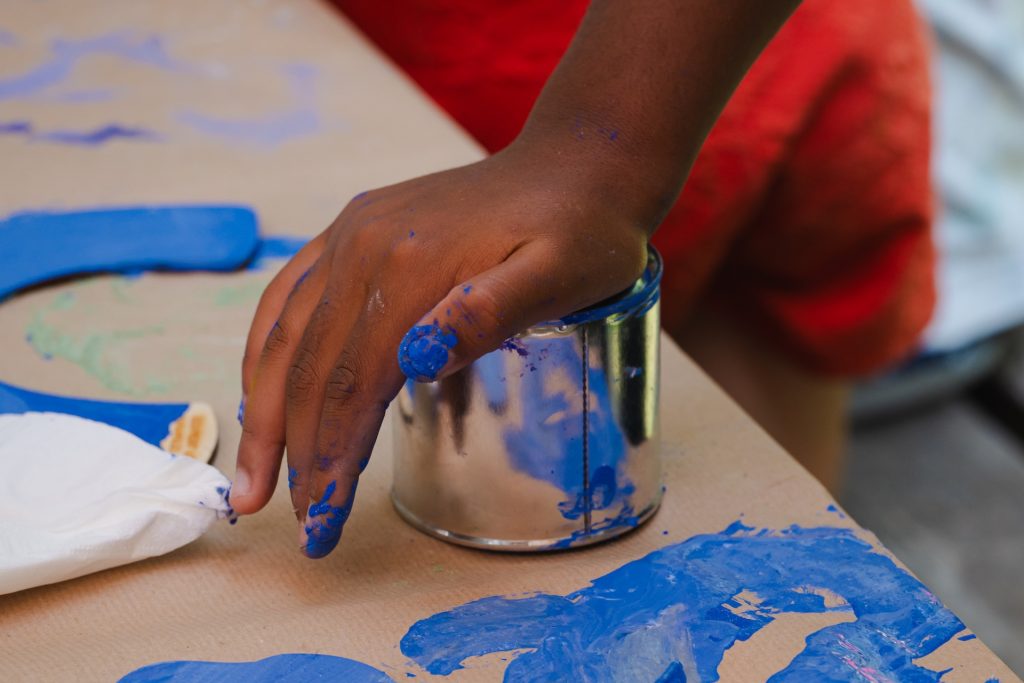
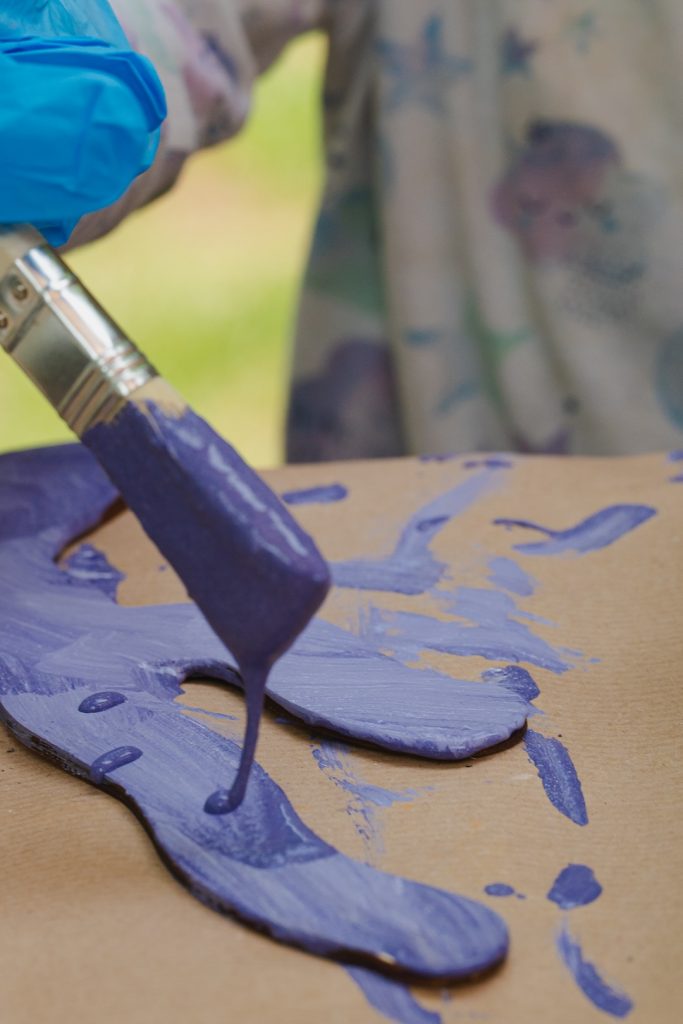
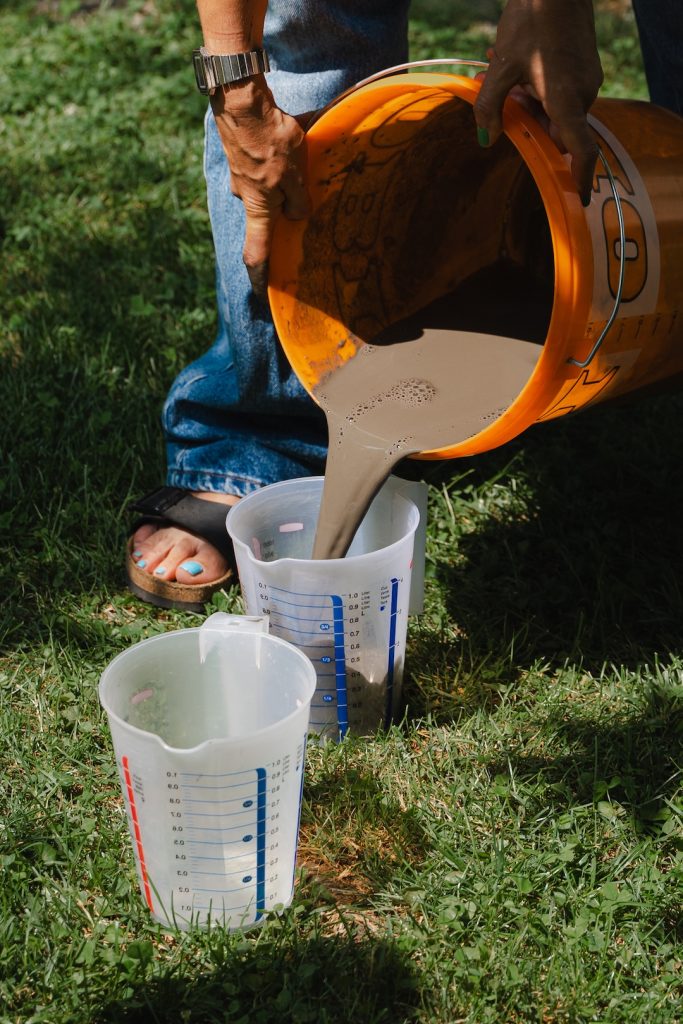
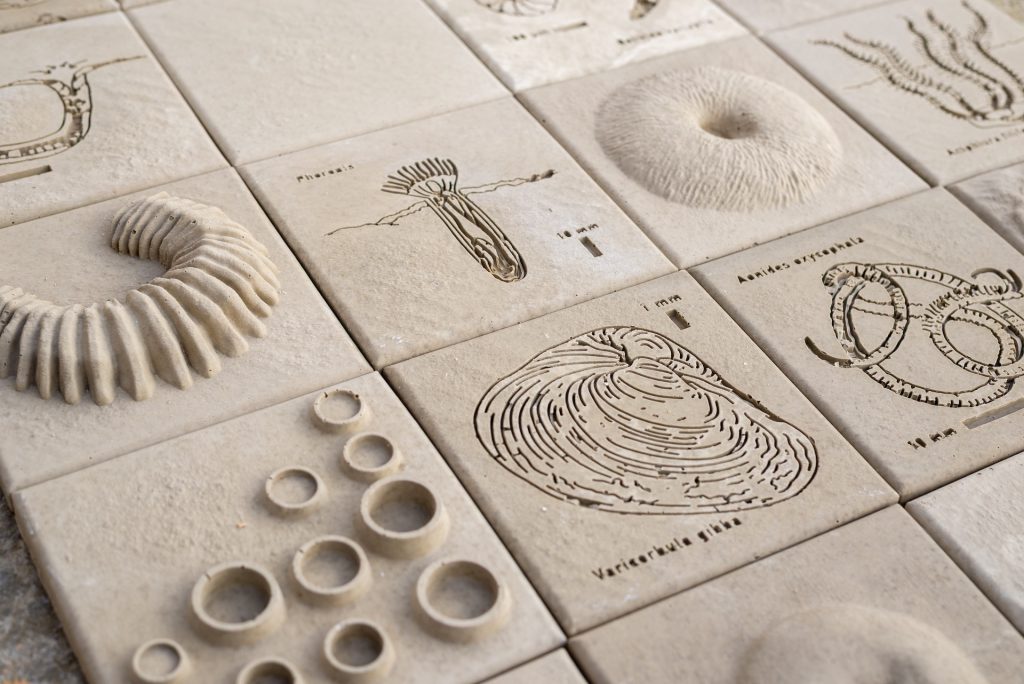
About Hypercomf
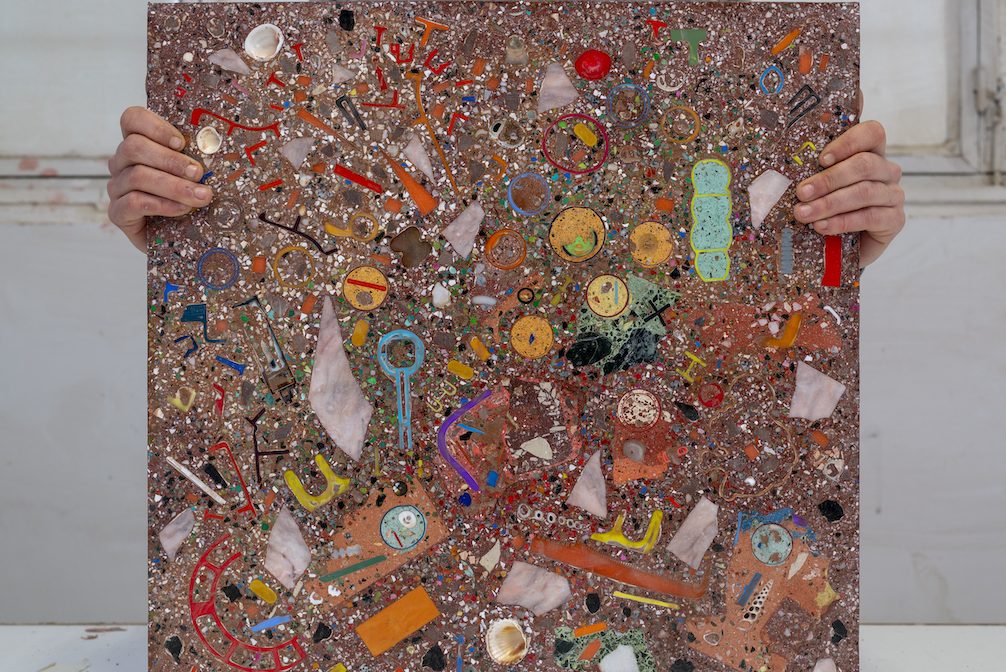
Hypercomf (she/her, Greek) is a multidisciplinary speculative design identity founded in 2017 on the island of Tinos, Greece. The practice explores the intersections of nature and culture, domestication, industry, and science, while fostering interdisciplinary collaborations and community engagement. Working across media and with biodiverse participants, Hypercomf creates narratives where organic and inorganic agents coexist—manifesting as spatial interventions, multimedia artworks, feasts, and sustainable design objects.
Founded by artists Paola Palavidi and Ioannis Koliopoulos, recent projects include Pytheas Travels (2023), a live performance critiquing mass tourism; Film Seed Festival (2022), a crop-powered, rural film festival; Marine Caves and Benthic Terrazzo (ongoing), prototype tiles made from marine plastic waste; and Anthemis, a digital herbarium of Syros flora and Biosentinel.services (2021), producing a solar cooker and wild yeast plant-based “Neighborhood Soda.”
Host / Region
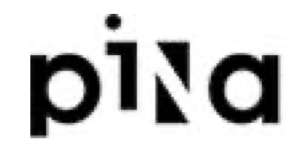
PiNA / Koper, Slovenia
Abstract
This challenge focused on exploring the potential reuse of marine sediment, minimizing the ecological impact, and considering the dynamic marine habitats affected by navigation, resuspension, and dredging activities.
Keywords
marine sediment, nature’s services, interspecies justice Koper Bay, intermedia art
Description of the regional challenge
The Port of Koper, the only port in Slovenia and the largest port in the Koper Bay and the northern Adriatic, and the dynamic marine habitats within the port are continuously affected by navigation and dredging activities. The challenges related to the management of marine sediment resulting from the dredging and deepening of basins and fairways are recognised in the National Maritime Spatial Plan (MSP). Innovative solutions are being sought, including test transfer of marine sediment using new technologies, for which the company is obtaining necessary permits.
How is the mission S+T+ARTS driven?
The residency offers artists the opportunity to explore the themes of seawater and sustainability in the port alongside marine science. The programme is designed to encourage artists to explore the practical applications of marine sediment and incorporate the potential reuse of the material to create valuable works that raise awareness of these issues. It is expected that the final results of the residency will make an important contribution to the discourse on environmental protection and sustainable port operations.
The result of the residency will be shown at the IZIS 2025, an annual contemporary art international festival produced by S+T+ARTS partner PiNA.
About The Project – Sediment Lab
Sediment Lab transforms sediment into functional art pieces, furniture, pottery, and sculptures via public workshops. Inspired by the nests and burrows of marine sediment-dwelling organisms, participants will use casting techniques to create unique designs. The lab workstation itself will be made of marine sediment composite material, educating visitors on marine sediment ecosystems. Collaborative synergies with fishermen, locals, Port of Koper, and NIB-MBS will guide the creation of prototypes.
Jury Statement
“Hypercomf’s project creatively and effectively repurposes marine sediment from the Gulf of Koper. This innovative approach addresses environmental issues while involving the community through workshops, raising awareness about the importance of dredging waterways. Their detailed proposal, which includes collaboration with scientists, artists, and local community members, impressed the Jury with its potential to address urgent local issues comprehensively. The project stood out for its unique combination of artistic innovation and community engagement. It also aligns well with PiNA’s focus on collaborative citizen science, participation, and educational innovation, highlighting its potential for significant community impact. The Jury recognized the exceptional nature of Hypercomf’s proposal, confirming it as a deserving winner.”
